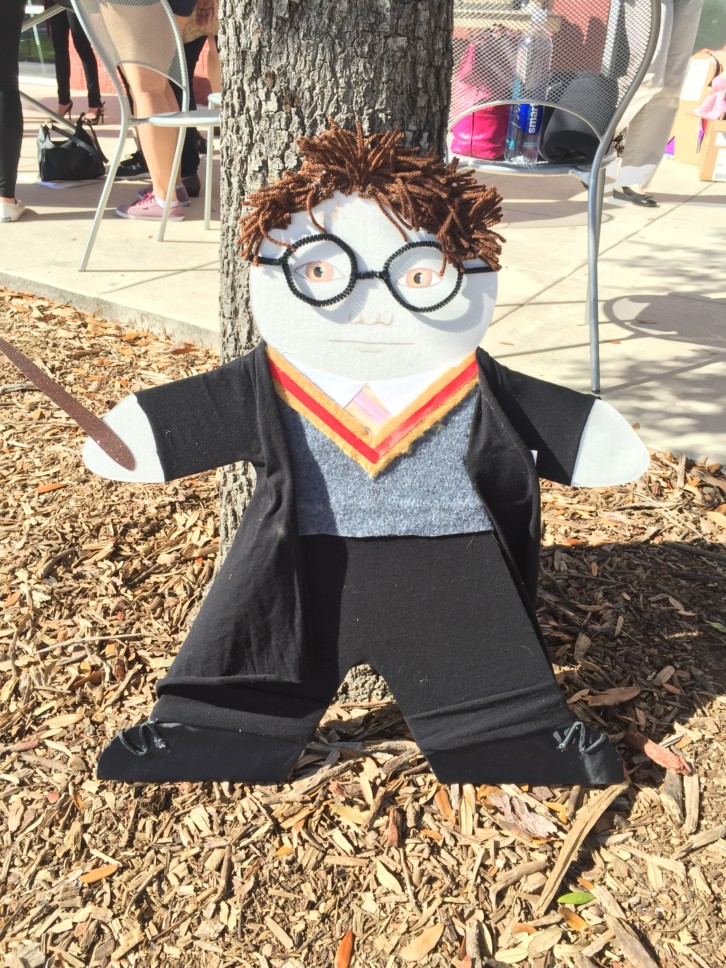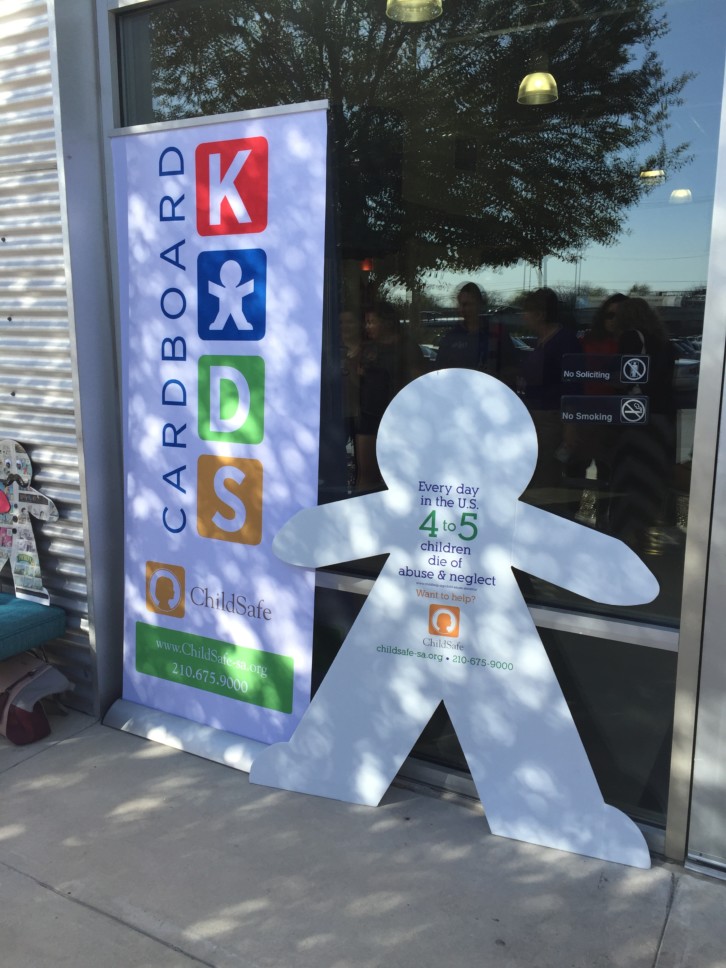Chances are you’re somewhat familiar with Cardboard Kids, the cute little cutouts shaped like gingerbread cookies often decorated in fun, whimsical ways seen throughout the city in the springtime. What you may not be familiar with is WHY they exist.
Cardboard Kids strives to bring attention to the thousands of children abused each year in Bexar County. ChildSafe, the creator of the campaign, has partnered with businesses, clubs, organizations, and individuals to decorate and display a Cardboard Kid on April 6. We can’t show the real children who are abused in our community, but we can raise awareness of the problem with Cardboard Kids. Child abuse occurs across every demographic; it knows no borders. Each victim of child abuse has his/her own story, and every Cardboard Kid is unique. Organizations all over the city have already committed to put names and faces to thousands of Cardboard Kids and display them all over the city on April 6 to kick off Child Abuse Awareness Month. When ChildSafe started Cardboard Kids four years ago, they distributed 5,846 cardboard cutouts; this year they will distribute 60,000.

Now, how do you talk about this with your kids? This is one of those super scary, “I don’t want to go there even though I know I have to” conversations.
Develop communication/emotional expression skills. Children often have a difficult time expressing their emotions and communicating their feelings. Help a child hone those skills by asking questions about their feelings and modeling this behavior for him/her.
Talk about body ownership. Children should understand that their body is their own and know the anatomically correct names for all their body parts, including their private parts.
Discuss the touching continuum. Explain to children that there are three kinds of touches: OK, Not OK, and Confusing touches.
Reiterate the importance of getting away. Tell children that if someone is touching them in a way that is “Not OK” or hurting them, they should get away from that person as quickly as possible.
Emphasize that kids should keep telling until someone helps. Talk to children about telling an adult if someone is hurting them or performing “Not OK” touches. Since initial disclosures of abuse are often dismissed or not believed, the child should understand that he/she should keep telling adults until someone helps.
Explain the difference between secrets vs. surprises. Because child sexual abuse often involves messages about keeping the behavior secret, children need to understand that surprises are fine but secrets are not.
Teach skills with behavior rehearsal, role-plays, and parent involvement. Children and even many adults retain the most information via active learning. Use role plays, modeling behaviors, and parent-child learning.
In addition, consider the following tips from RAINN (Rape, Abuse & Incest National Network):
It’s OK to say “no.” It’s important to let children know they are allowed to say “no” to touches that make them uncomfortable. This message isn’t obvious to children, who are often taught to be obedient and follow the rules. Support your child if he/she says “no,” even if it puts you in an uncomfortable position. For example, if your child doesn’t want to hug someone at a family gathering, respect his/her decision to say “no” to this contact.
Reassure them that they won’t get in trouble. Young children often fear getting in trouble or upsetting their parents by asking questions or talking about their experiences. Be a safe place for your child to share information on topics he/she has questions about or that make him/her uncomfortable. Remind your child he/she won’t be punished for sharing this information with you.
Show them what it looks like to do the right thing. It could be as simple as helping an elderly person get off a bus or picking up change that someone has dropped on the ground. When you model helping behavior it signals to your child that this is a normal, positive way to behave.
When they come to you, make time for them. If your kid comes to you with something he/she feels is important, take the time to listen. Give him/her your undivided attention, and take his/her concerns seriously. Your children may be more likely to come to you in the future if they know their voices will be heard.
I try to incorporate these actions in bits and pieces—a five-year-old and two-year-old will only listen for so long or will not understand the big picture—with related activities, whether that’s in story time, talking about our days, going to the bathroom, going to new places, making new friends, watching movies and shows (My Little Pony is a great starting point, IMHO).
There are also some great books I found that have made it into rotation at home:
- Some Parts are Not For Sharing
- I Said No! A Kid-to-kid Guide to Keeping Private Parts Private
- Do You Have a Secret? (Let’s Talk About It!)
The list of books and resources are endless, much like the anxiety that comes with parenting. But we can help our families and others out there by bringing attention to the problem that exists in this community and others.
When you see a Cardboard Kid around town, share it on social media using the hashtag #CardboardKidsSA, and start having the sweat-inducing, anxiety-increasing, must-talk-about-it conversations.

Additional Resources
A Mighty Girl—the world’s largest collection of books, toys, and movies for smart, confident, and courageous girls
The Mama Bear Effect—conversation starters with kids! Fantastic coloring pages to work alongside your kids, with speaking points for you. Download here.











